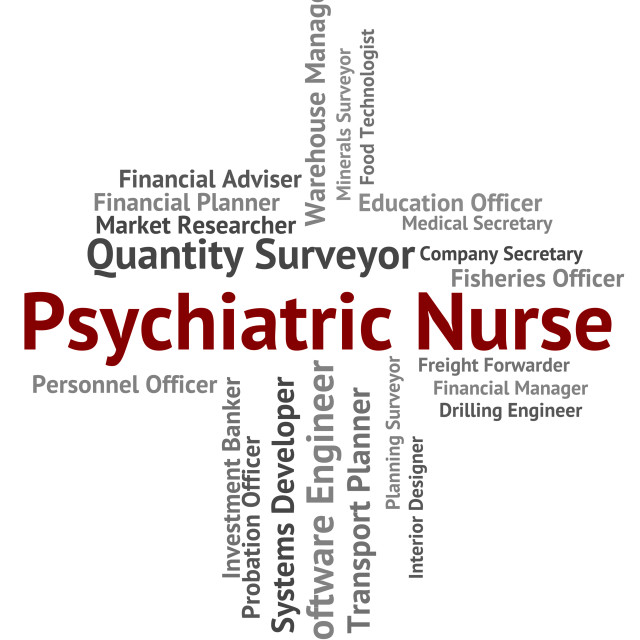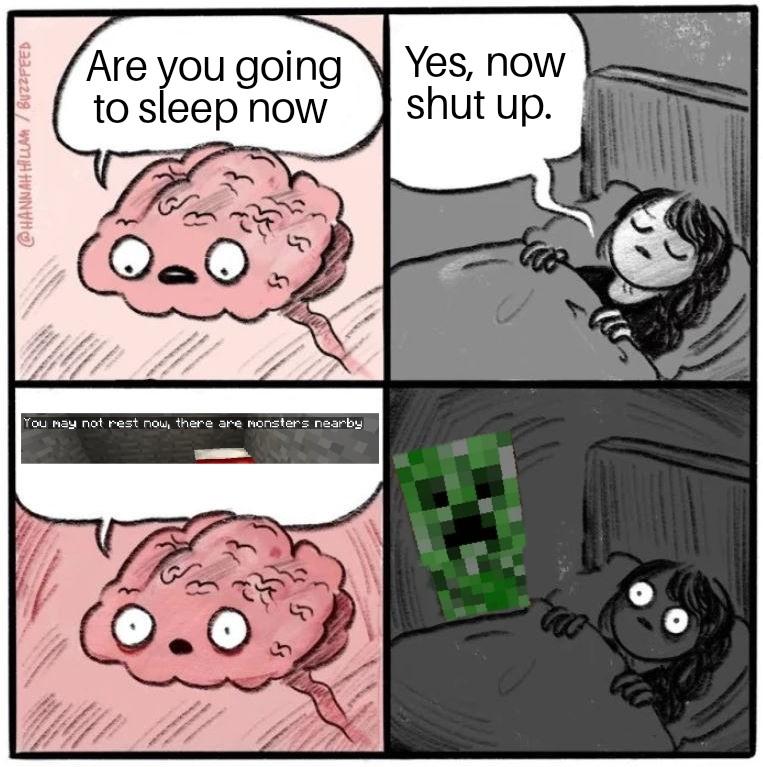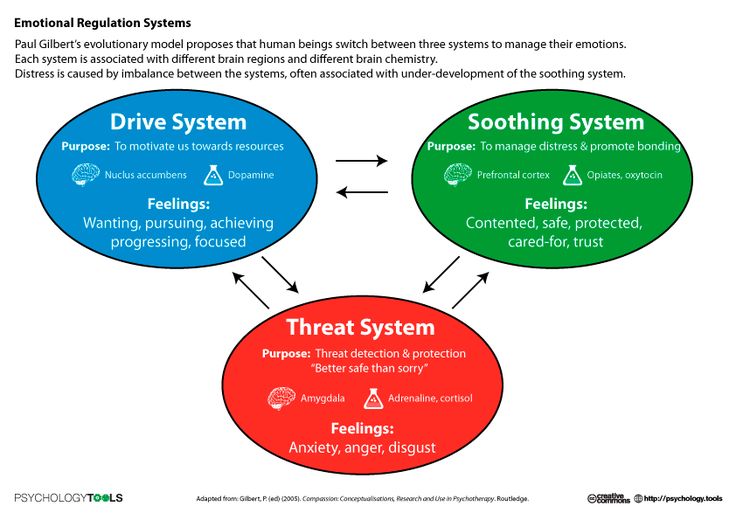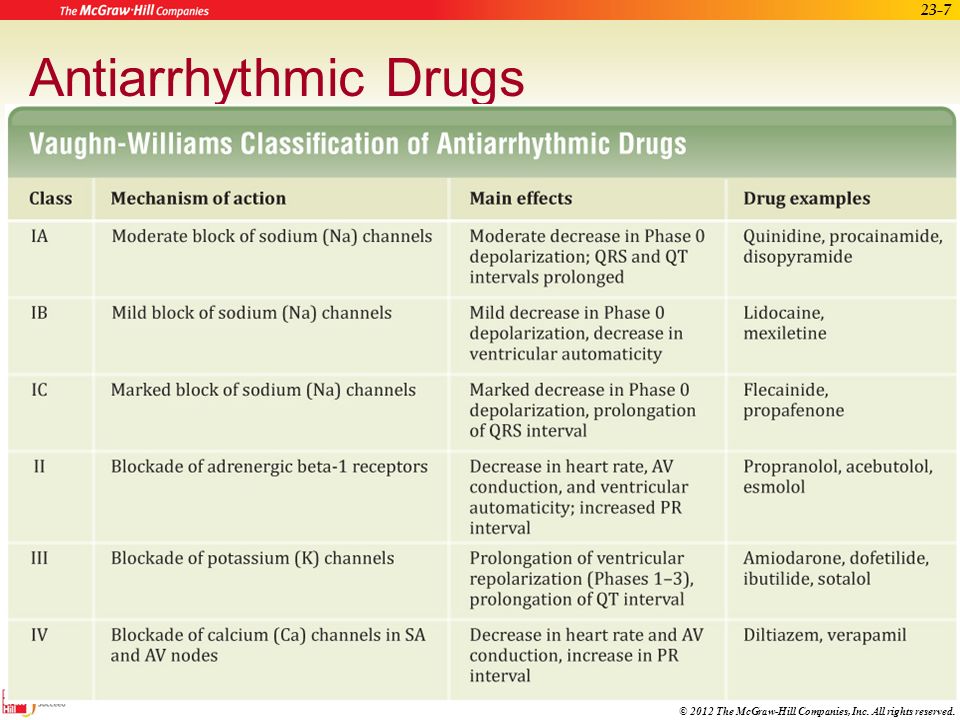H f autism
10 Symptoms of High-Functioning Autism
- Emotional Sensitivity
- Fixation on Particular Subjects or Ideas
- Linguistic Oddities
- Social Difficulties
- Problems Processing Physical Sensations
- Devotion to Routines
- Development of Repetitive or Restrictive Habits
- Dislike of Change
- Focus on Self
- Unusual Movement Patterns
In 2013, the American Psychiatric Association published the Diagnostic and Statistical Manual of Mental Disorders, Fifth Edition (DSM-5). This edition of the DSM had some important changes to the way autism is diagnosed. Previously, diagnoses like Asperger’s Syndrome and Childhood Disintegrative Disorder were used to describe individuals at the extreme ends of the autism spectrum. High-functioning autism and Asperger’s are not an official medical diagnosis, but rather unofficial terms used to describe individuals who have mild symptoms of autism.
Parents and providers in the field may still refer to these terms to indicate a level of support or degree of disability.
With the DSM-5, those diagnoses all fall under “Autism Spectrum Disorders.” Individuals with an autism spectrum disorder now include a level of severity in their diagnosis. What would have been known as high functioning autism or Asperger’s is now considered ASD Level 1.
Regardless of the terms used, early identification of autism spectrum disorders is crucial. Diagnosis rates for autism continue to rise, especially as parents and professionals become more familiar with the symptoms of Level 1 ASD or high functioning autism. Tools like the Autism Diagnostic Observation Schedule (ADOS) help psychologists and other therapists make an official diagnosis.
Many patients are getting the assistance they need to live full, productive lives because their unusual behaviors are no longer seen as simple social awkwardness or eccentricity.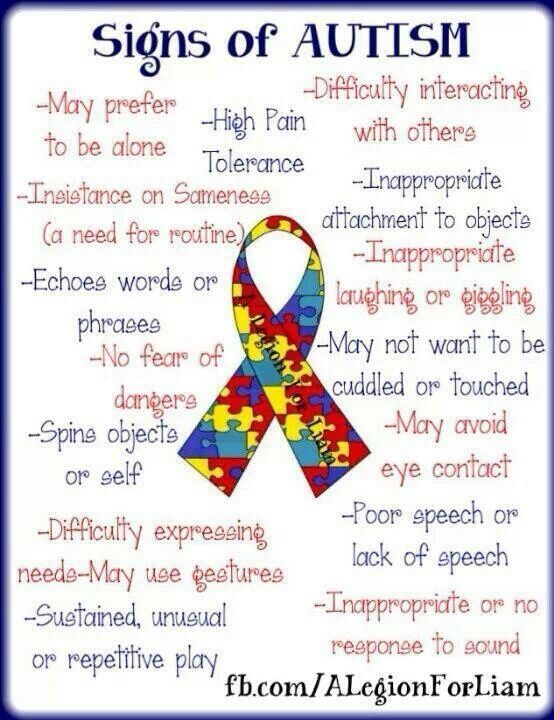 As more caring medical and mental health professionals learn to recognize the most common signs of high functioning autism, the number of interventions available to people with autism will rise.
As more caring medical and mental health professionals learn to recognize the most common signs of high functioning autism, the number of interventions available to people with autism will rise.
See Also: What are the 10 Most Common Signs of Autism Spectrum Disorder (ASD)?
Emotional SensitivityAlthough often overlooked, sensitivity to emotions is one of the most common symptoms of high functioning autism. These individuals can function in day-to-day life but struggle to control their emotions the same way that neurotypical, or non-autistic people, are able to do. For example, a frustrating morning experience like running out of milk or being cut off while driving can cause irritability and difficulty concentrating for the rest of the day. People with autism spectrum disorder may also have unusually intense emotional reactions compared to the rest of the population.
Fixation on Particular Subjects or IdeasContinually discussing the same topics in conversation, obsessively playing the same song repeatedly, or reading every article written about a certain topic are
signs of high-functioning autism in adults and adolescents.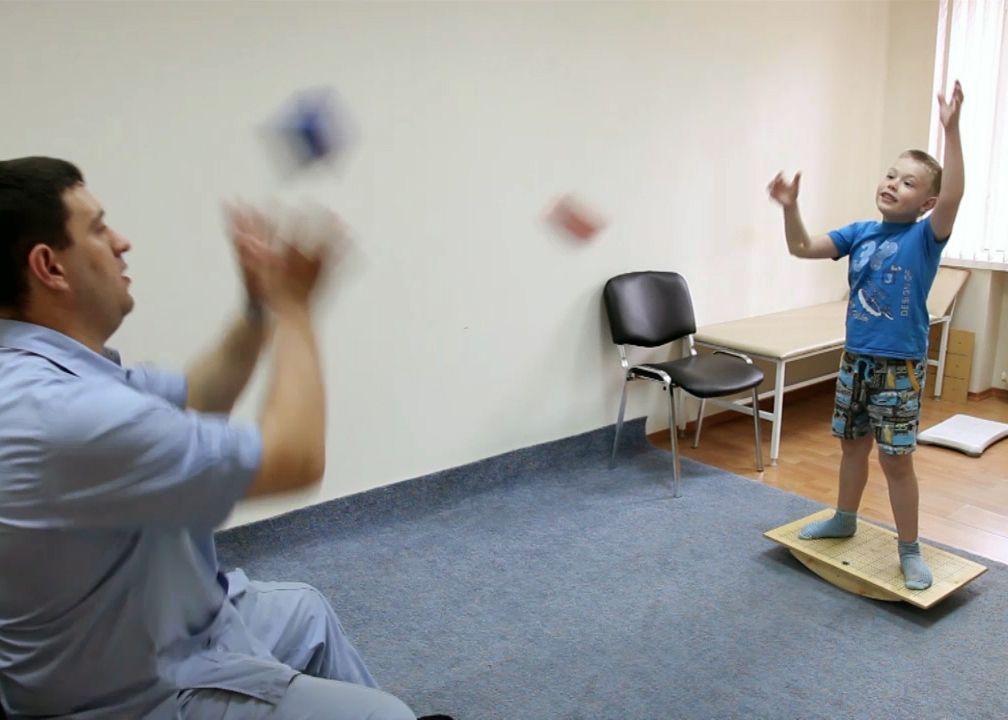 These interests can be negative if they take over the individual’s life or interfere with their relationships with others.
These interests can be negative if they take over the individual’s life or interfere with their relationships with others.
Of course, these obsessive tendencies can also be helpful; Dan Aykroyd, writer and star in the hit film Ghostbusters, was inspired by his focus on ghosts and the paranormal. Many other high-functioning autistic individuals have used their focus on mathematics, biology, or writing to inspire successful careers.
Linguistic OdditiesChildren on the low-functioning end of the autism spectrum usually struggle with:
- learning to speak
- building vocabulary
- holding conversations with others
Individuals with signs of high-functioning autism may start talking much earlier than normal and often display an impressive vocabulary. They may find conversations with others boring or difficult to follow and may avoid speaking with their peers. An autistic person may simply seem eccentric during conversations as their diverse vocabularies, frequent interruptions or focus on particular topics seem like oddities rather than neurological symptoms.
Parents and teachers may notice that young autistics have problems interacting with their peers. These high-functioning autism symptoms in children and teenagers can include:
- a limited social circle
- problems sharing toys or materials
- difficulty completing group work
Sometimes youth are considered shy, quirky or socially awkward when they are truly dealing with autism spectrum disorder. These kids need counseling services to help them learn social rules, as the problems with interacting with others usually stem from a lack of understanding appropriate behavior with peers. They have a difficult time recognizing social cues and body language. Early intervention from mental health professionals can help autistic youth learn the best ways to interact with their classmates and potential friends.
Problems Processing Physical SensationsMany individuals with autism have sensory difficulties.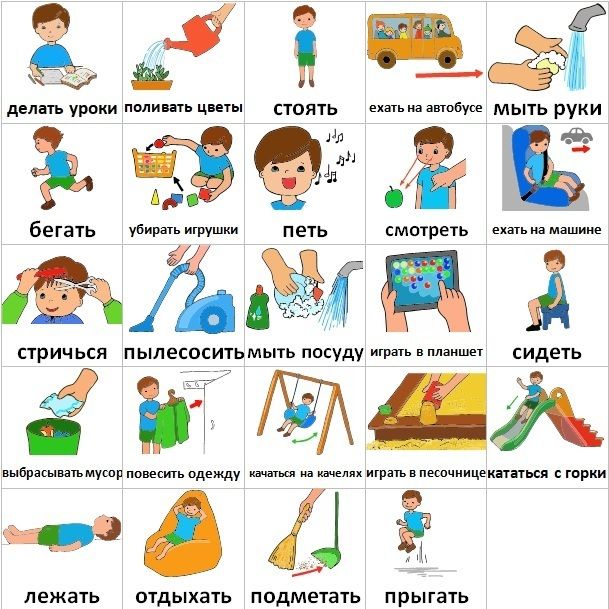 They may have an intolerance to specific:
They may have an intolerance to specific:
- noises
- tastes
- smells
- feelings
Noisy public places can lead to emotional distress, as can uncomfortable clothing or unwanted touches. These issues can be disruptive and stressful, but according to the National Institute of Neurological Disorders and Stroke, autism symptoms can improve over time as children with mild autism learn to regulate their own behavior through work with professionals.
Many individuals on the autism spectrum can benefit from occupational therapy to manage sensory issues. An occupational therapist can create goals and strategies for the individual to work on. They might meet with the individual one day a week or a couple days, depending on the person’s needs.
Devotion to RoutinesPeople with high-functioning autism are typically devoted to routines. They may stick with routines developed for them by others, such as reading for exactly 15 minutes before going to bed or brushing their teeth exactly five minutes after eating a meal.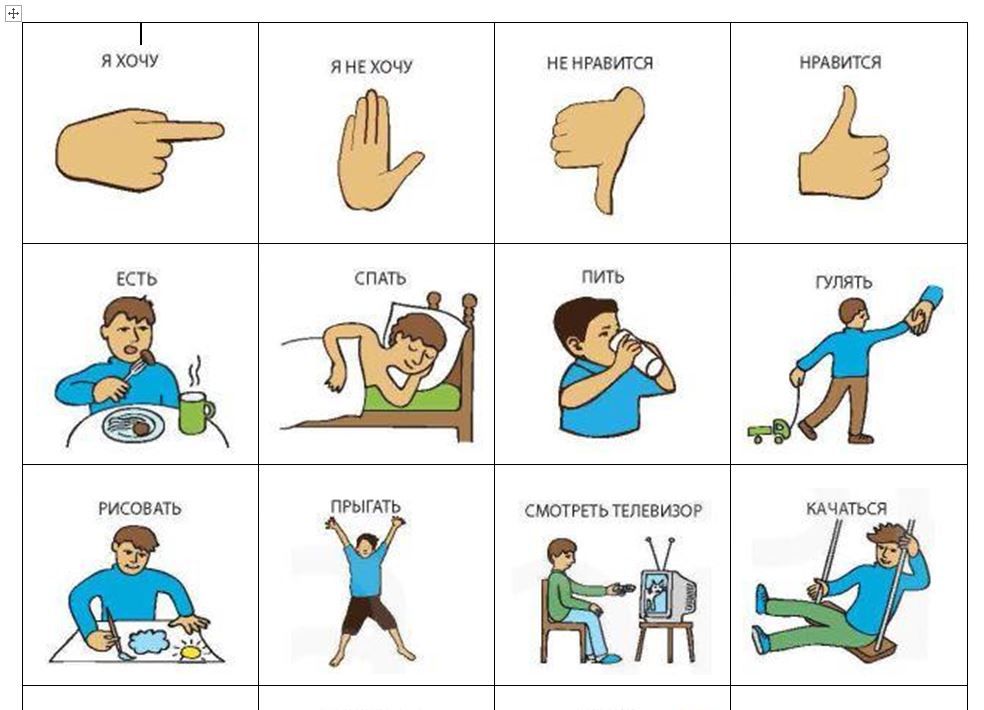 Any sort of deviation from the routine could cause frustration. Examples include:
Any sort of deviation from the routine could cause frustration. Examples include:
- A parent needing to help a sick sibling at bedtime instead of reading a bedtime story
- The school bus running late and missing first period
- A snowstorm causing school to be cancelled
The person with high-functioning autism may devote an exorbitant amount of time to performing their routines to the detriment of:
- self-care
- sleep
- exercise
- homework
- learning
Repetitive habits may also be symptoms of high-functioning autism in adults. Those habits could interfere with the person’s ability to do what they need to do or what others want them to do. One type of repetitive habit might be related to movement. The individual might have to tie and untie their shoes multiple times before they are satisfied and are able to start walking or leave the house.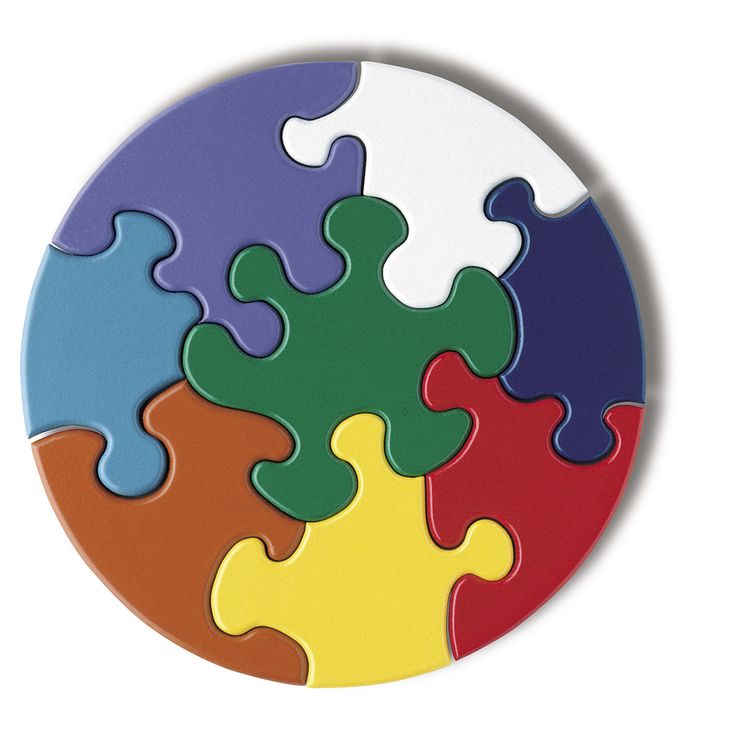
Some high functioning autistic people also develop restrictive habits that interfere with socially accepted living. For example, an individual might refuse to wear any other kind of shirt than a tee shirt. This could impact their health and well-being if they live in a place with cold weather.
Dislike of ChangeOne of the hallmark high functioning autism symptoms is a strong dislike of change. An individual might eat the same meal every day for breakfast, and they may eat it in the same quantity, on the same dish, and in the same place. Any disruption or change in the routine could cause an outburst in the individual. For example, if the usual brand of peanut butter has run out, and a different brand has been purchased instead, the person with high-functioning autism may have an outburst of anger or frustration. If someone has used their preferred dish, they may have a similar outpouring of volatility.
Focus on SelfPeople with high-functioning autism may have trouble developing deep social relationships with others. Part of this issue also includes an inordinate focus on self. A person with high-functioning autism may spend an excessive amount of time talking about themselves, not allowing another person to share a complete thought or response. This makes carrying on a conversation difficult. In the family or household setting, a person with high-functioning autism may only think of themselves when doing activities. For example, they might pour themselves a drink without asking if anyone else would also like a drink. They might take more than what others perceive as a fair share of a snack or treat, genuinely not thinking that others might also want some of the items.
Part of this issue also includes an inordinate focus on self. A person with high-functioning autism may spend an excessive amount of time talking about themselves, not allowing another person to share a complete thought or response. This makes carrying on a conversation difficult. In the family or household setting, a person with high-functioning autism may only think of themselves when doing activities. For example, they might pour themselves a drink without asking if anyone else would also like a drink. They might take more than what others perceive as a fair share of a snack or treat, genuinely not thinking that others might also want some of the items.
A person with high-functioning autism may have unusual movement patterns. Toe walking is a common movement disorder. The person may walk on their toes or the ball and the toes of the feet without putting much bodyweight on the other parts of the foot. This can result in foot pain in the ball, hammertoe, or bunion from the excessive pressure. The shoes and socks may wear out in the forefoot area much faster than in the heel area. People who walk on their toes may experience more foot injuries, such as blisters, calluses, and corns on their footpads and toes. Toe walking is more common in young children and people with musculoskeletal, explains the American Academy of Orthopedic Surgeons.
The shoes and socks may wear out in the forefoot area much faster than in the heel area. People who walk on their toes may experience more foot injuries, such as blisters, calluses, and corns on their footpads and toes. Toe walking is more common in young children and people with musculoskeletal, explains the American Academy of Orthopedic Surgeons.
Related Resource: Top 20 Best Applied Behavior Analysis Programs
Not all individuals with autism exhibit physical tics or an inability to maintain social ties. High functioning autistic individuals usually present symptoms not originally associated with autism. Helping professionals must continue to push for recognition of the range of behaviors associated with the autism spectrum. Familiarity with these ten symptoms of high-functioning autism helps providers, parents, teachers and others coordinate the early treatment of a person with this condition. Resources like Autism Speaks can also provide parents and professionals with support and helpful ideas.
Related:
- 20 Autism Charities Worthy of Your Donations
- 30 Great Jobs for People on the Autism Spectrum
- How Can Speech Improve in Nonverbal Children with Autism?
- What are Distress Tolerance Skills?
Asperger's, Autism Levels & More
High-functioning autism isn’t an official medical diagnosis. It’s often used to refer to autistic people who read, write, speak, and manage life skills without much assistance.
High-functioning autism isn’t an official medical diagnosis. It’s often used to refer to autistic people who read, write, speak, and manage life skills without much assistance.
Autism is a neurodevelopmental disorder that’s characterized by difficulties with social interaction and communication. Some autistic people need minimal support, while others require substantial support on a daily basis. This is why autism is now referred to as autism spectrum disorder (ASD).
High-functioning autism is often used to refer to those with lower support needs.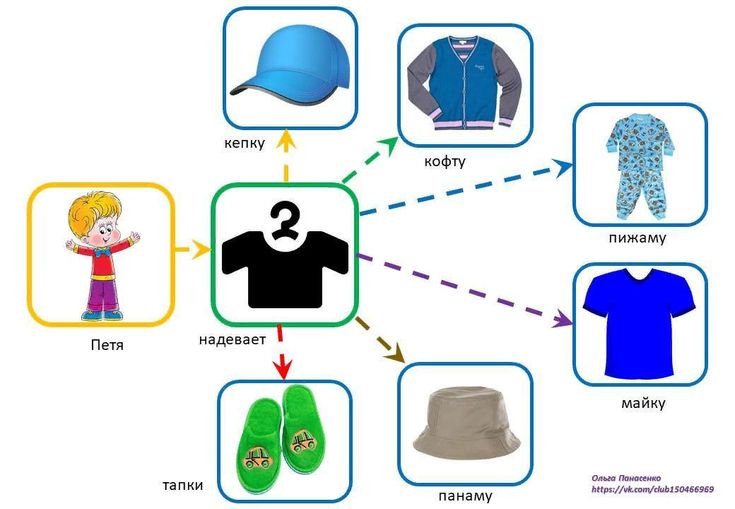 Read on to learn more about it.
Read on to learn more about it.
The Diagnostic and Statistical Manual of Mental Disorders, Fifth Edition (DSM-5) was updated and released in 2013. Before its most recent update, the DSM used to detail a condition known as Asperger’s syndrome.
People diagnosed with Asperger’s syndrome had several symptoms in common with autistic people, but they didn’t have delays in:
- the use of language
- cognitive development
- the development of age-appropriate self-help skills
- the development of adaptive behavior
- the development of curiosity about their environment
Their symptoms were often milder and less likely to affect their daily lives than the symptoms of autistic people. They may even have been perceived as “high-functioning.”
However, high-functioning autism has never been an official clinical diagnosis, and Asperger’s syndrome was eliminated from the DSM-5 along with some other neurodevelopmental disorders.
People who have these types of difficulties with social interaction and communication or who display repetitive or restrictive behavior would now simply be diagnosed with ASD.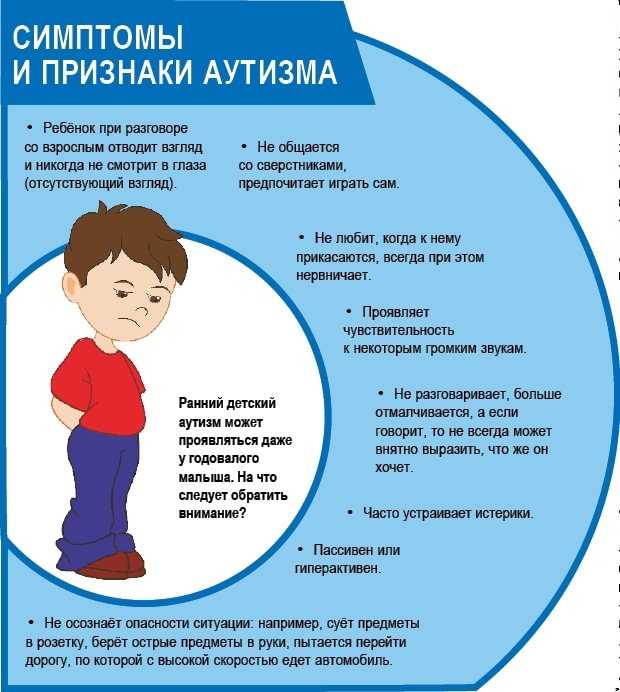 This is regardless of how much support they may need.
This is regardless of how much support they may need.
ASD is divided into three levels:
- Level 1. People at this level may have symptoms that don’t interfere too much with their work, school, or relationships. This is what most people are referring to when they use the terms high-functioning autism or Asperger’s syndrome.
- Level 2. People at this level require some outside support on a daily basis. Examples of outside support include speech therapy and social skills training.
- Level 3. People at this level require substantial outside support on a daily basis. In some cases, support may include full-time aides or intensive therapy.
While it’s difficult to determine a person’s ASD level, trained psychologists have some tools that can help them accomplish this, such as the Autism Diagnostic Observation Schedule, Second Edition (ADOS-2). This assessment is typically paired with a thorough developmental history.
ASD can be diagnosed as early as 18 months. However, many children, and even some adults, may not be diagnosed until much later.
Being diagnosed at a later age can make support more difficult. If you or your child’s pediatrician think they may be autistic, consider making an appointment with an ASD specialist. Learn more about testing for ASD.
There aren’t any standardized recommendations for different levels of ASD. Support depends on each person’s unique symptoms.
People with different levels of ASD may all need the same kinds of support, but those with level 2 or level 3 ASD will likely need more intensive, long-term support than those with level 1 ASD.
Potential ASD support includes:
- Speech therapy. ASD can cause a variety of speech issues. Some autistic people might not be able to speak at all, while others might have trouble engaging in conversations with others. Speech therapy can help to address a range of speech problems.
 Learn more about speech disorders.
Learn more about speech disorders. - Physical therapy. Some autistic people have trouble with motor skills. This can make actions such as jumping, walking, or running difficult. Physical therapy can help to strengthen muscles and improve motor skills.
- Occupational therapy. Occupational therapy can help you learn how to use your hands, legs, or other body parts more efficiently. This can make daily tasks and working easier.
- Sensory training. Autistic people are often sensitive to sounds, lights, and touch. Sensory training helps people become more comfortable with sensory input.
- Applied behavioral analysis (ABA). This is a technique that encourages positive or helpful behaviors while decreasing behaviors that interfere with functionality. There are several types of applied behavioral analysis (ABA), but most use a reward system.
- Medication. While there aren’t any medications designed to treat ASD, certain medications can help to manage specific symptoms, such as depression or emotional lability.
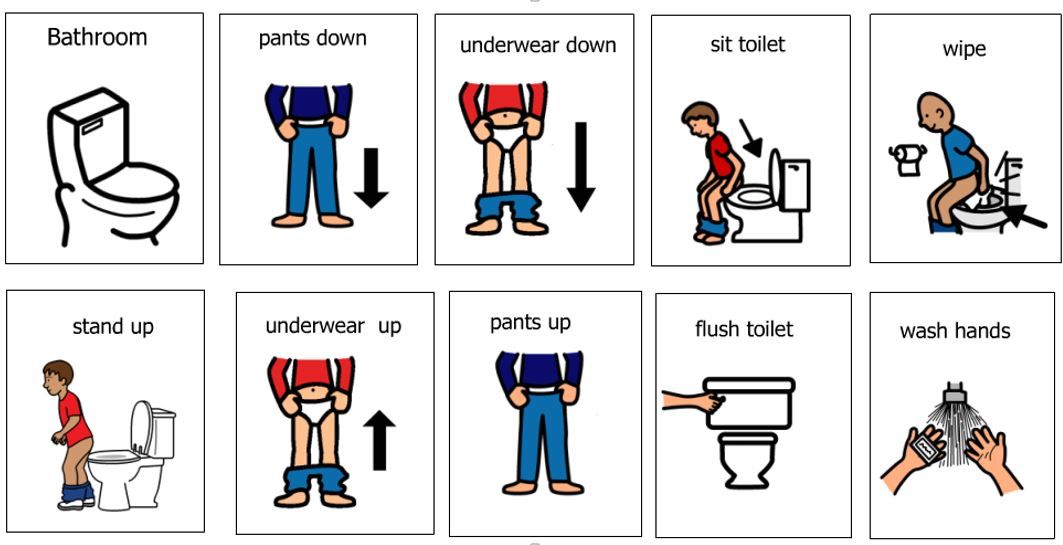
High-functioning autism isn’t a medical term, and it doesn’t have a clear definition.
People using this term are likely referring to something similar to level 1 ASD. It may also be comparable to Asperger’s syndrome, a condition not currently recognized by the APA.
If you think that you or your child have any of the symptoms of ASD, see a doctor or specialist. Blogs can be another great source of support.
causes, symptoms, diagnosis and treatment
IMPORTANT!
The information in this section should not be used for self-diagnosis or self-treatment. In case of pain or other exacerbation of the disease, only the attending physician should prescribe diagnostic tests. For diagnosis and proper treatment, you should contact your doctor.
For a correct assessment of the results of your analyzes in dynamics, it is preferable to do studies in the same laboratory, since different laboratories may use different research methods and units of measurement to perform the same analyzes. nine0003
nine0003
Definition
Autism, more specifically Autism Spectrum Disorders (ASD), is a group of mental disorders characterized by impairments in social interaction and communication – the process of communicating and passing information to other people. Autism is characterized by limited, stereotyped, repetitive behavior. In different patients, disorders are expressed to varying degrees, while they may or may not be accompanied by impaired speech and intellectual development. nine0003
The first signs of the disease are noted already in infancy or early childhood, anomalies in social functioning and behavior persist throughout life.
Causes of autism
The causes of autism spectrum disorders are not fully understood, but it is believed that genetic factors play a leading role. It is known that the risk of having a child with ASD increases with the age of the parents.
Possible relationship between the onset of ASD in a child and the course of pregnancy: prematurity of the fetus, the use of valproic acid preparations by the mother during pregnancy to treat epilepsy, manic-depressive psychosis, migraine, as well as gestational diabetes in the mother (diabetes mellitus that develops during pregnancy ).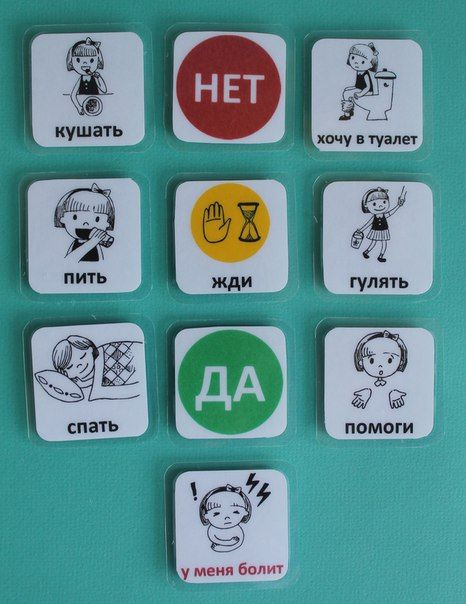 It is unlikely that any of these factors is of decisive importance in the development of ASD, but may be realized in interaction with a genetic predisposition. nine0003
It is unlikely that any of these factors is of decisive importance in the development of ASD, but may be realized in interaction with a genetic predisposition. nine0003
Autism is more commonly diagnosed in boys, with a sex ratio of approximately 3:1.
Since the mid-1990s, there have been concerns about the possible association of vaccination with the onset of ASD. Current epidemiological data indicate no such association. Moreover, there is no evidence of an association between the use of vaccines and the risk of developing ASD, even when vaccinating children at risk - brothers and sisters of children with ASD. It has been proven that the preservative thiomersal and aluminum adjuvant contained in inactivated vaccines do not increase the likelihood of ASD in vaccinated children. According to many international studies, changes in the vaccination schedule, the withdrawal of any vaccines and their components did not affect the incidence of ASD. nine0003
nine0003
Disease classification
Depending on the number of symptoms and their severity, there are three main types of ASD: childhood autism, atypical autism, and Asperger's syndrome.
Asperger's syndrome is the mildest form of ASD - intelligence does not suffer, changes can be regarded as personality traits and do not interfere with professional development and social adaptation of a person.
There is a division of the RAS depending on the presence or absence of intellectual disabilities and the ability of a person to use spoken or written language as a means to express needs or desires. nine0003
Symptoms of autism
The main manifestations of ASD are disorders in social interaction, communication (anomalies in communication) and limited, stereotyped, repetitive behavior. In addition, patients often have other non-specific problems: various phobias (fears), sleep and nutrition disorders, aggression and auto-aggression (aggression directed at oneself).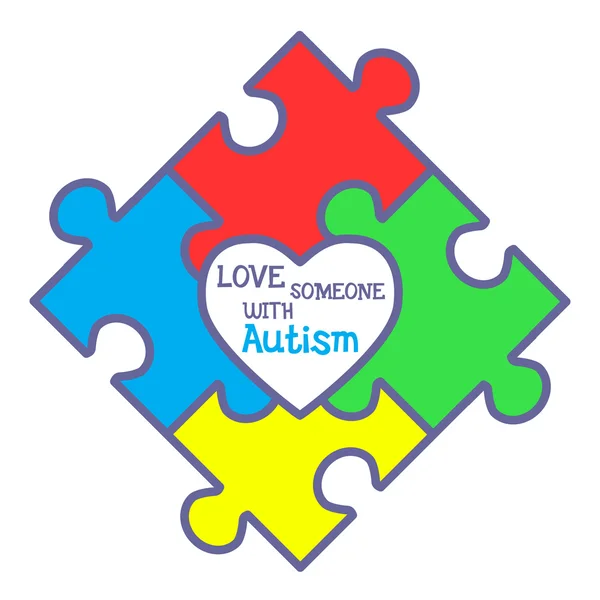 Contrary to popular belief, most autism spectrum disorders are not associated with a high level of intelligence, although some patients may have extraordinary abilities in some area of knowledge. nine0003
Contrary to popular belief, most autism spectrum disorders are not associated with a high level of intelligence, although some patients may have extraordinary abilities in some area of knowledge. nine0003
Let us dwell in more detail on the description of the main manifestations of the disease.
Disorders of social interaction and social communication . Parents pay attention to the fact that the child rarely uses eye contact, gestures, facial expressions and posture to regulate social interaction, he has reduced interest in interacting with peers and adults. The child may not speak or start speaking with a strong delay, and if he does, he does not start a conversation, does not ask questions, communicates exclusively on topics of interest to him; can repeat the same words and phrases over and over. The baby has no desire to walk in his arms, he does not always distinguish parents from other people. Such children do not look at the interlocutor, may not respond to the speech addressed to them, to requests, do not respond to the name, they do not enter into or reluctantly enter into a dialogue, do not smile in response.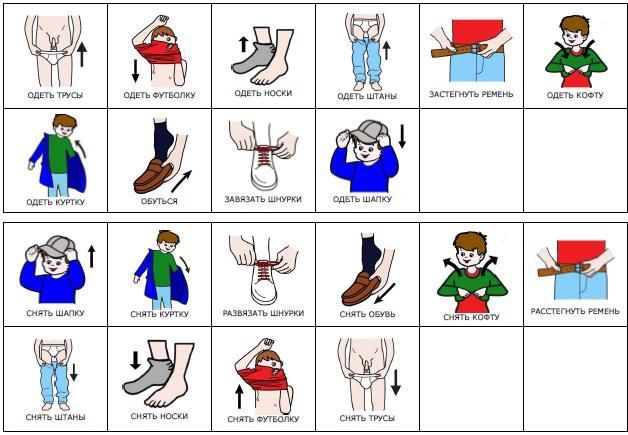 nine0003
nine0003
Often, a child with autism can observe unusual behavior, for example, violation of bodily boundaries, lack of embarrassment or excessive anxiety when interacting with new people, monotonous scenarios in communication.
After the age of 7 years, some children with ASD remain speechless or have a minimal set of words. Other children, starting to communicate, cannot build long-term friendships and take into account social rules. The problem of many older children and adults with autism is the inability to understand and feel the state of other people, their mood. nine0003
People with ASD are characterized by naivete, innocence, they do not understand irony and humor well, they experience difficulties in maintaining a dialogue and understanding the rules of behavior.
Many patients with ASD retain excessive or, conversely, absent gesticulation, unstable or excessive eye contact.
Stereotyped, repetitive behavior, limited interests and hobbies . With the exception of Asperger's syndrome, most patients present with varying degrees of intellectual decline. Children with ASD are characterized by peculiar play activities, for example, a child may use toys in an unusual way: scatter, lick or perform other repetitive manipulations. Already in early childhood, selective interests often appear - for example, it can be the study of moving objects, a passion for narrow topics (interest in the alphabet, numbers, names and individual characteristics of objects). Such children experience pronounced difficulties when it is necessary to switch attention. nine0003
With the exception of Asperger's syndrome, most patients present with varying degrees of intellectual decline. Children with ASD are characterized by peculiar play activities, for example, a child may use toys in an unusual way: scatter, lick or perform other repetitive manipulations. Already in early childhood, selective interests often appear - for example, it can be the study of moving objects, a passion for narrow topics (interest in the alphabet, numbers, names and individual characteristics of objects). Such children experience pronounced difficulties when it is necessary to switch attention. nine0003
With age, the set of symptoms may change in content and severity. Many older children and adults are characterized by inflexibility of thinking, manifested by a lack of response to changing environmental conditions, the difficulty of assimilating and using new information, practical skills, and an excessive tendency to detail.
Autism Diagnostics
When collecting complaints and examining, the doctor draws attention to the characteristics of the patient's behavior, assesses the current psychiatric status and level of development.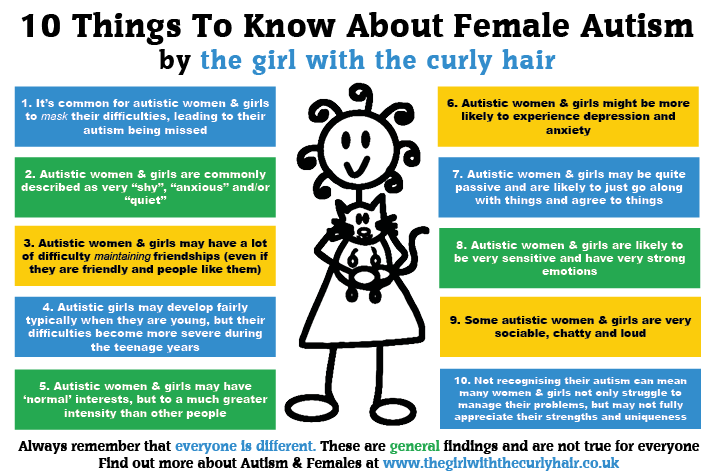 nine0003
nine0003
To clarify the diagnosis and improve the accuracy of clinical diagnostics, additional standardized methods related to the "gold standard" are used: ADOS-II and ADI-R.
ADOS-II is a test performed by a child or adult psychiatrist or clinical psychologist. It consists in observing the patient performing certain tasks in a playful way. Depending on age, ability to speak and play, the doctor chooses one or another module - a type of testing. The modules differ in the complexity of the proposed games, activities and the presence of speech tasks. The 1st module is used for children speaking in separate words. 2nd - for children using sentences of several words. 3rd - for freely communicating children. 4th - for freely communicating teenagers and adults. With the help of a certain set of toys and items, the specialist creates various game situations. He observes the performance of the work, evaluating facial expressions, words, ways of solving the proposed tasks.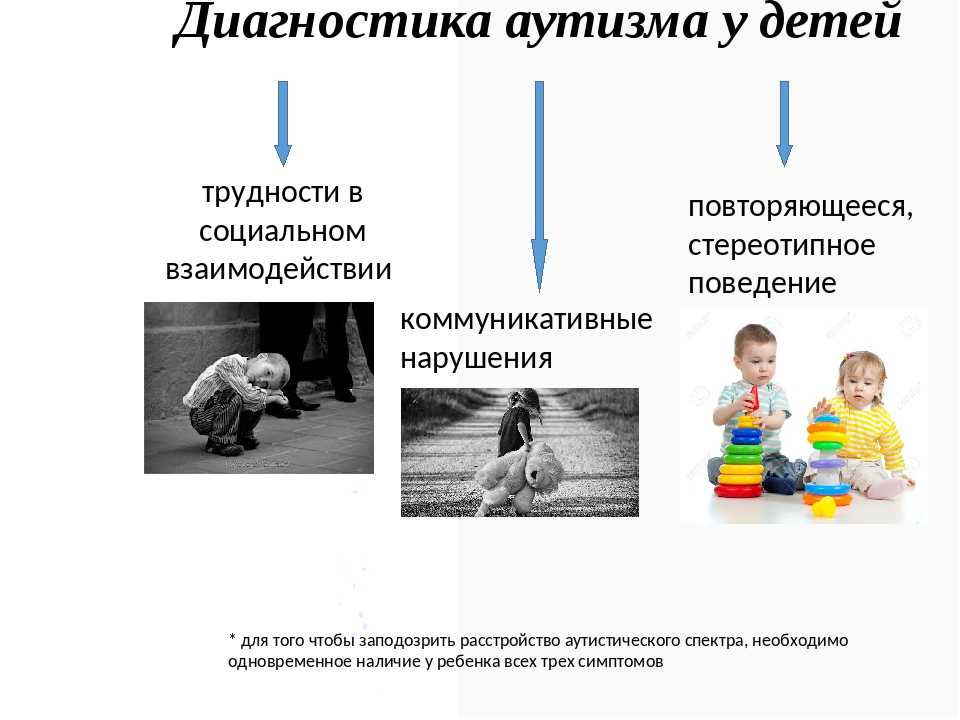 The tasks last about an hour, after which the specialist processes the test results and draws up a conclusion. Usually, the test is recorded on video, which helps to make a more accurate diagnosis and provides an opportunity for other specialists to assess the child's condition. nine0003
The tasks last about an hour, after which the specialist processes the test results and draws up a conclusion. Usually, the test is recorded on video, which helps to make a more accurate diagnosis and provides an opportunity for other specialists to assess the child's condition. nine0003
ADOS-II is not the only criterion for making a diagnosis. As an additional test to collect more data, the ADI-R screening can be used.
ADI-R - an interview with about 100 questions conducted by a psychologist or psychiatrist; but not with the patient, but with his parents or other close people. The questions are aimed at assessing:
- the quality of social contact;
- quality of communication and speech features,
- behavior patterns (repetitive, limited or stereotyped actions).
Genetic testing may be recommended in children and adolescents with an established diagnosis to clarify the immediate cause of ASD. It is compiled according to an individual plan with the involvement of geneticists or other specialists.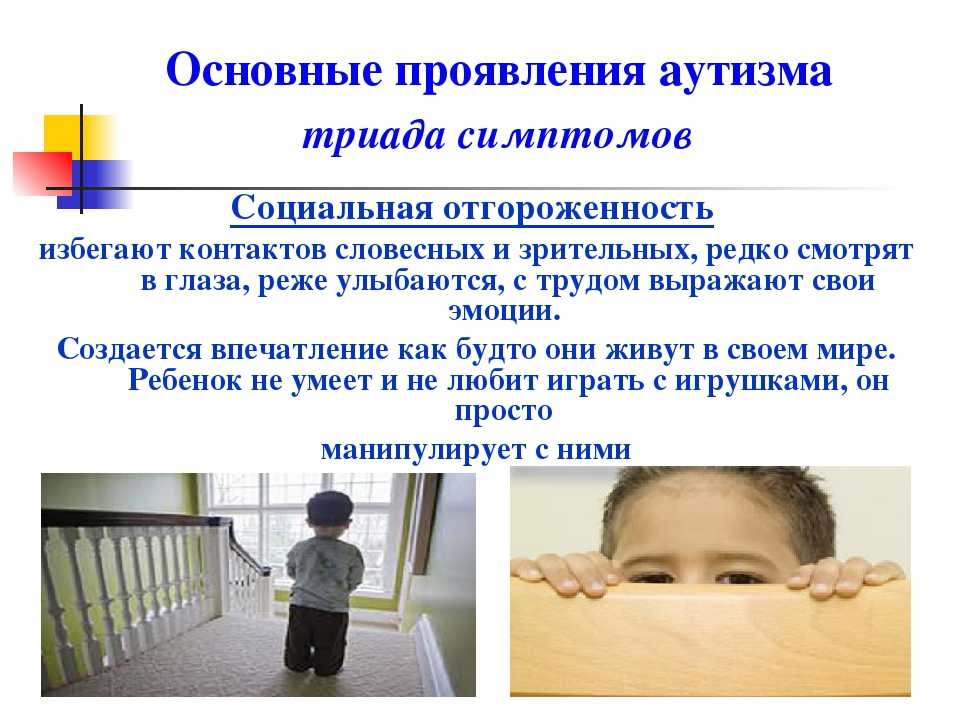
Instrumental methods of examination are of secondary importance, not leading in the diagnosis of ASD. Electroencephalography (EEG), computed tomography (CT) of the brain, and magnetic resonance imaging (MRI) of the brain are not recommended for all children and adolescents with or suspected ASD. On the one hand, this is due to the fact that the examination may be difficult due to ASD-specific violations of the patient's communication and behavioral skills. On the other hand, these studies cannot confirm or refute the diagnosis of autism spectrum disorder, but may be indicated for diagnosis and treatment in case of suspected presence of other disorders, for example, epilepsy, brain tumor. nine0003
Which doctors to contact
Autism can be suspected pediatrician. Confirms the diagnosis, prescribes therapy and observes children, and then an adult psychiatrist, neuropathologist, psychologist.
Autism treatment
There is currently no direct treatment for ASD.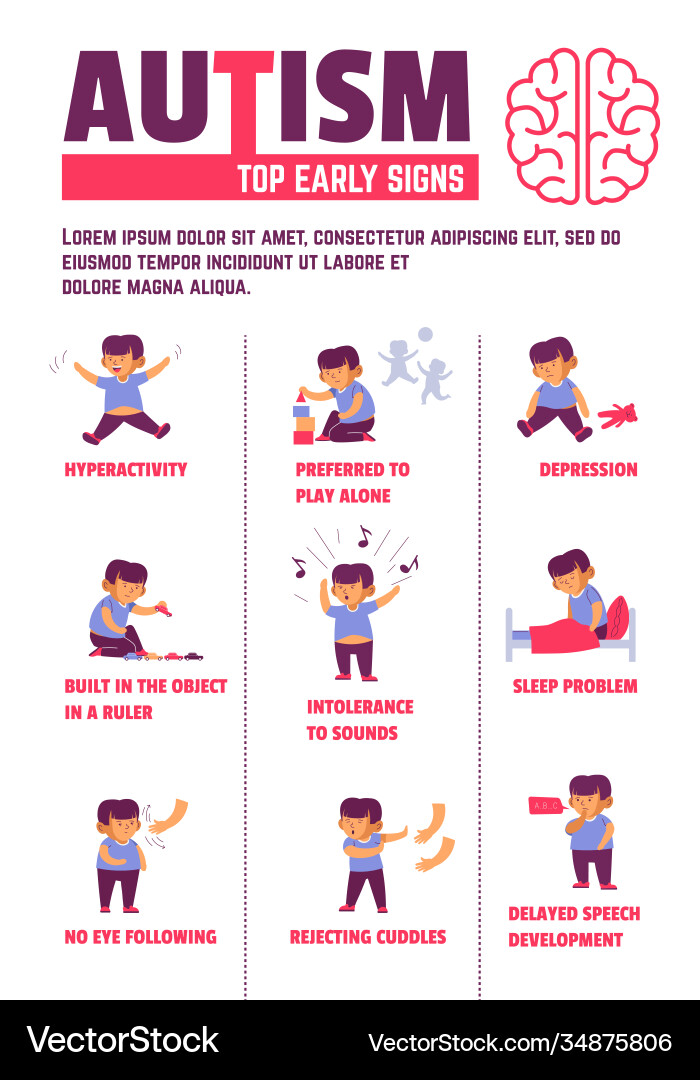 Prescribed medications, for example, from the group of antidepressants, can help in solving various non-specific problems - sleep and nutrition disorders, increased irritability, attacks of aggression directed at oneself or others. The main treatments for ASD are predominantly non-pharmacological in nature. They include educational and psychological assistance aimed at the socialization of a person with ASD - the earlier assistance is started, the better the prognosis for the development of the child. nine0003
Prescribed medications, for example, from the group of antidepressants, can help in solving various non-specific problems - sleep and nutrition disorders, increased irritability, attacks of aggression directed at oneself or others. The main treatments for ASD are predominantly non-pharmacological in nature. They include educational and psychological assistance aimed at the socialization of a person with ASD - the earlier assistance is started, the better the prognosis for the development of the child. nine0003
There are many methods of treatment and care for patients with ASD that have no proven effectiveness: gluten-free and casein-free diets, brain micropolarization, the Tomatis method, bioacoustic correction, art therapy, as well as hippotherapy, dolphin therapy and many others. If parents insist on using these methods, it is important to understand that they should not be used as a substitute for the main treatment program.
Nootropic and peptide drugs are often used in the treatment of patients with ASD.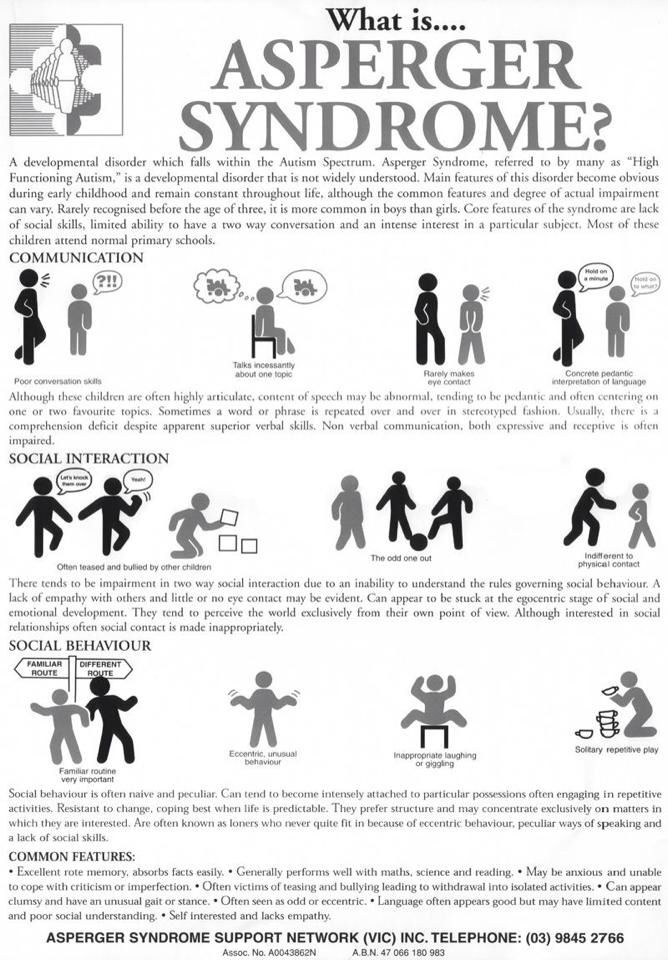 Currently, there is no convincing evidence of their ability to influence the development of cognitive and speech skills. However, they can increase motor activity, cause disinhibition and sleep disorders. nine0003
Currently, there is no convincing evidence of their ability to influence the development of cognitive and speech skills. However, they can increase motor activity, cause disinhibition and sleep disorders. nine0003
Complications of the disease
With autism, various damages are possible that the patient inflicts on himself and others.
Due to impaired cognitive functions, speech, difficulties in interacting with others, patients with ASD, with the exception of patients with Asperger's syndrome, in most cases cannot live independently, study and work.
Diagnosis and treatment of other diseases are difficult due to the high pain threshold and behavioral characteristics of those suffering from ASD. nine0003
Prevention of autism
There are currently no specific measures to prevent ASD. However, early diagnosis is a necessary condition for organizing early comprehensive care for a child, which can improve the prognosis.
Sources:
- Clinical guidelines.
 Autism Spectrum Disorders. Clinical recommendation developer Association of Psychiatrists and Psychologists for evidence-based practice Approved by the Scientific and Practical Council of the Ministry of Health of the Russian Federation, 2020. - p. 52.
Autism Spectrum Disorders. Clinical recommendation developer Association of Psychiatrists and Psychologists for evidence-based practice Approved by the Scientific and Practical Council of the Ministry of Health of the Russian Federation, 2020. - p. 52. - Bozhkova E.D., Balandina O.V., Konovalov A.A. Autism Spectrum Disorders: Current State of the Problem (Review). Modern technologies in medicine. T. 12, No. 2, 2020. S. 111-120.
IMPORTANT!
The information in this section should not be used for self-diagnosis or self-treatment. In case of pain or other exacerbation of the disease, only the attending physician should prescribe diagnostic tests. For diagnosis and proper treatment, you should contact your doctor. nine0005 For a correct assessment of the results of your analyzes over time, it is preferable to do studies in the same laboratory, since different laboratories may use different research methods and units of measurement to perform the same analyzes.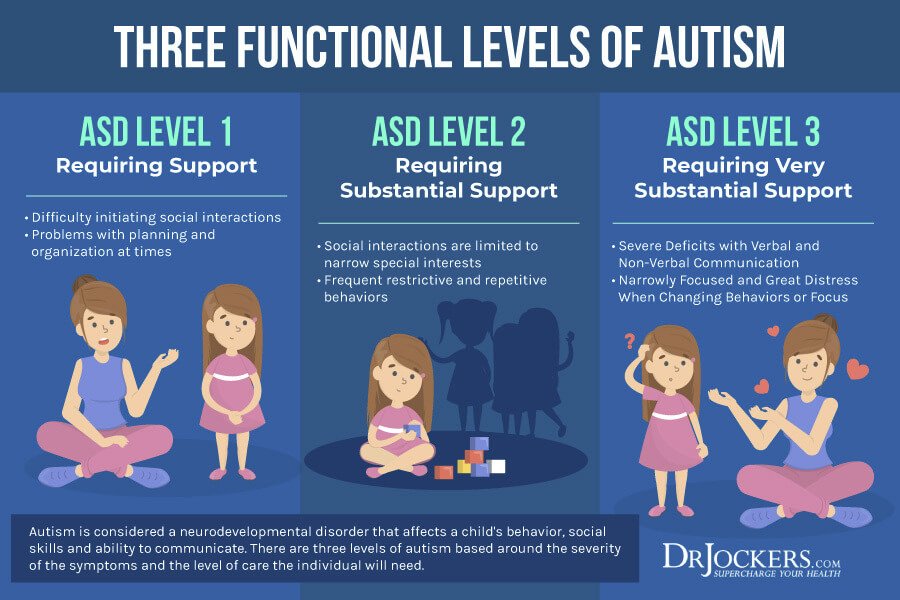
Autism in a child is not a death sentence
Most of us think of Dustin Hoffman, the hero of the film Rain Man, when we hear the word autism. Meanwhile, such people live near us, although the exact number of them in Russia, where the diagnosis of autism began to be made just a little over thirty years ago, is still unknown, because. There are no official statistics on people with autism spectrum disorder in our country. According to the "All-Russian seminar-meeting on helping children with autism spectrum disorder and families raising them" in Voronezh, as of April 2015, the prevalence of childhood autism is 1 per 60 children born. Just think about these numbers. nine0003
Let's understand the concept of "autism". Autism is a mental disorder characterized by a pronounced deficit in personal, social, speech and other aspects of development and communication skills. Such children are characterized by: a tendency to self-isolation, isolation from the real world and loss of ties with it, immersion in the world of personal experiences, lack or loss of social skills.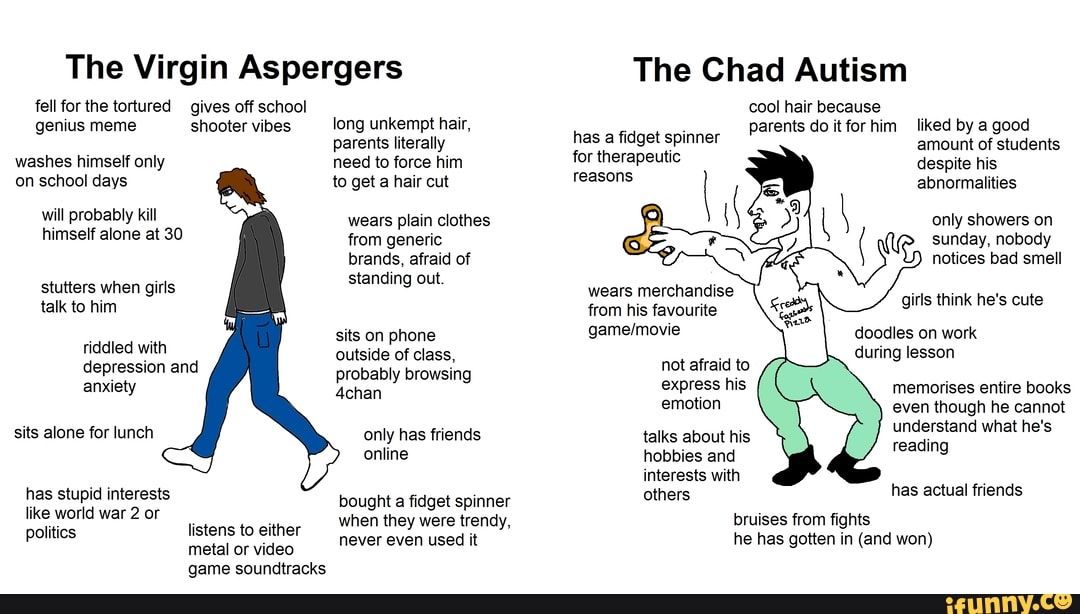
What are the manifestations of autism in a child?
- If in infancy a child does not make eye contact, does not smile at familiar faces, cannot and does not want to play games like "coo-coo", "okay" with an adult. nine0080
- If a child, having reached the age of two, does not speak, does not point a finger at what he wants, but uses his mother's hand for this, if the child has tantrums that you cannot explain.
- If the child does not interact well with others, does not make contact, does not respond to the name, cannot play role-playing games himself or with others. If the main games are manipulation of objects, for example, lining them up in rows by size and color, building towers from pots.
- If a child has increased anxiety, and he adheres to rituals, he cannot get away from them. For example, he walks along the same route, being attached to the same food product, and any replacement of the usual leads to tantrums. nine0080
- If a child has incentives, he sways all the time, spins in one place, constantly makes incomprehensible movements with his fingers, etc.

All this does not indicate that your child is autistic, but should make you pay attention and observe. And it is better to take the child to a specialist - a speech therapist, psychologist, psychiatrist.
Undoubtedly, being a parent of a child diagnosed with autism is difficult. Moreover, parents experience difficulties in obtaining state support, as well as in finding specialized correctional centers. On her blog, the mother of a child with autism writes: “An autistic child at home is a disaster. It's very fun and difficult, this is Alf - an alien. For example, it's great to open a window and thoughtfully throw things out of it one at a time. Watch how they fall, and then mom runs and collects. Moreover, sometimes it seems that he does it on purpose, and sometimes it really is. nine0003
It is a pretty common idea today that autism is not a disease. It's just that these children, these people are different. They think differently, they see the world differently, they perceive information differently. We can say that this is true: a person with autism really perceives the world around him differently, but this brings him a lot of suffering and problems. It is worth remembering that our society is simply not ready for such people, we love to condemn both the child and the mother who cannot calm the child. nine0003
We can say that this is true: a person with autism really perceives the world around him differently, but this brings him a lot of suffering and problems. It is worth remembering that our society is simply not ready for such people, we love to condemn both the child and the mother who cannot calm the child. nine0003
In fact, children with autism are very lacking in communication, but they do not know how to establish interaction, because they do not know how to navigate the environment at all. This is one of the most tragic deficits in autism. For example, such a baby, wanting to communicate, can start pushing other children, bullying them. Or jumping in front of a child who somehow interested him, waving his arms and laughing.
You and I understand that he won't make friends like that. But he can't do it any other way. And it takes a lot of time and patience on the part of adults to help him. nine0003
What should parents do? Recommendations from a social worker
- First, calm down: autism is not a death sentence.
 From the fact that our children are sick, we do not cease to love them and wish them happiness.
From the fact that our children are sick, we do not cease to love them and wish them happiness. - Don't close your eyes to the problem. The sooner you admit to yourself that there is a problem and it is serious enough, it needs to be solved, and that every second time is ticking against your child, the more you will help him.
- And most importantly - learn to live with your child, learn to understand his strange desires and requests, learn to respond correctly and quickly to his tantrums. nine0080
- Unfortunately, you should not rely on a magic pill and the fact that there is some special place where your child will be helped. You will have to change and change your life. But this is not a change for the worse.
Meanwhile, all experts in the field of autism note: early diagnosis and early intervention bear fruit and in about 50% -60% of cases allow the diagnosis of autism to be removed by school or to bring the child into a state acceptable for studying in a public school.
